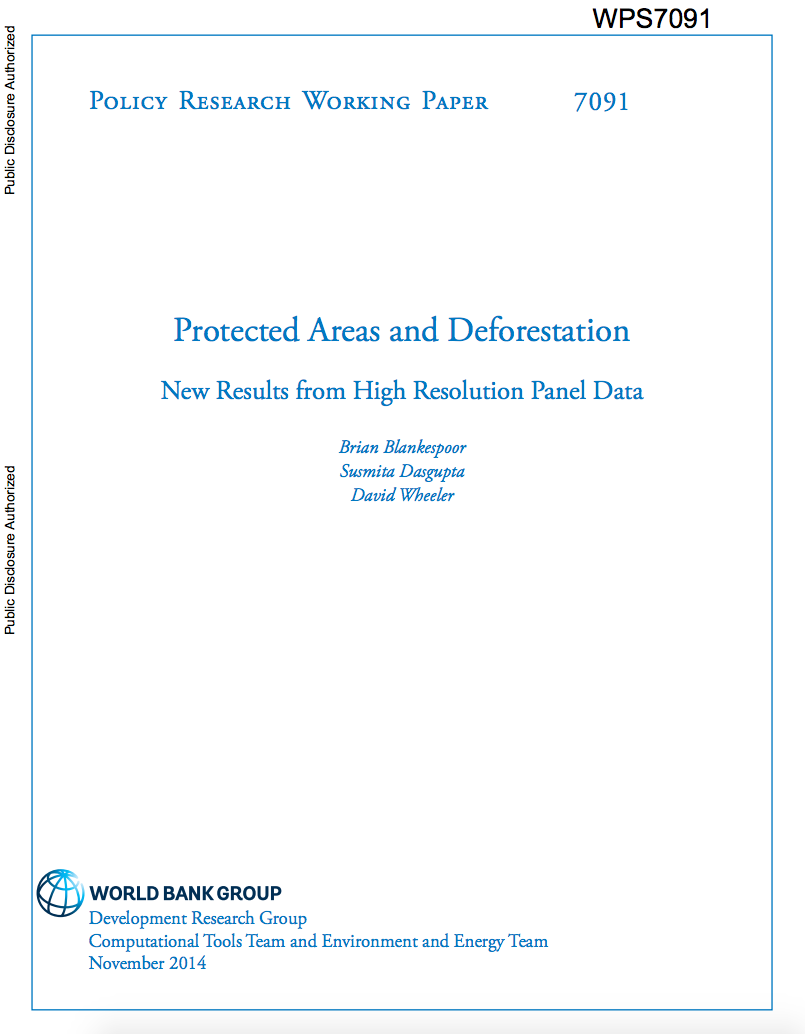Protected Areas and Deforestation : New Results from High Resolution Panel Data
This paper investigates the
effectiveness of protected areas in slowing tropical forest
clearing in 64 countries in Asia/Pacific, Africa, and Latin
America for the period 2001-2012. The investigation compares
deforestation rates inside and within 10 kilometers outside
the boundary of protected areas. Annual time series of these
deforestation rates were constructed from recently published
high-resolution data on forest clearing. For 4,028 parks,





